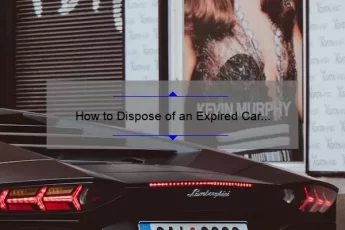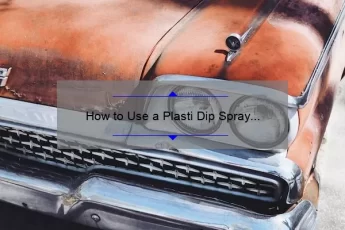Many people ask, “Can you put e85 in any car?” There are several different types of cars. Some are fuel-injected, and others have a flex-fuel system. This system allows a vehicle to run on either pure gasoline or a blend of gasoline and ethanol. In either case, the car detects the fuel blend and adjusts its ignition and fuel parameters to account for the difference in octane and burn speed.
Fuel-injected cars from the last 20 years
In addition to giving a car a boost in power, E85 can also save money on maintenance. The savings will vary, depending on the type of car and the driver’s driving habits. For example, putting E85 in a fuel-injected vehicle can lead to lower costs for cylinder cleaning, which can be expensive every few years. A Ford Focus, for example, can accept E85, which can help reduce the buildup of carbon on the valves and pistons. It can also dissolve existing buildup, which is helpful for vehicles with high mileage.
However, there are some restrictions. For example, ethanol can damage the rubber parts of a car’s fuel system. This can lead to fuel leaks and even a fire risk. You must change your fuel system to put E85 in your car.
E85 is a fuel blend of 85% ethanol and 15% gasoline. While it does not burn as efficiently in conventional internal-combustion engines, it contains 72% more energy per gallon than gasoline, giving your car better fuel mileage. Studies by the National Renewable Energy Lab have shown that E85 has better fuel mileage than regular gasoline.
If you want to put E85 in your car, you may need to add a fuel injection-pressure booster. This boost increases the amount of ethanol in the fuel. The added parts may not be compatible with the vehicle, and you may have to replace them. The cost of the E85 depends on where you buy it and what kind of car you drive. For example, a Shell station in Snoqualmie, Washington, sells E85 for $3.25 per gallon, nearly three dollars less than premium unleaded.
Fuel-injected cars from the last 20 years may be able to put E85 in their gas tanks. However, ask a mechanic whether it’s safe for your vehicle. Some mechanics may think it needs to be more expensive or more straightforward for you. However, the process can be done safely and inexpensively if you know what you’re doing.
Fuel-injected cars without a flex-fuel system
A flex-fuel system allows vehicles to use ethanol in place of gasoline. This alternative fuel is cleaner burning and contributes less greenhouse gas emissions. Its technology uses electronic car sensors and microprocessors to adjust the engine’s timing and amount of gasoline injection. This helps reduce emissions and allows the vehicle to run more efficiently.
Fuel-injected cars with a flex-fuel system get extra gas mileage. Ethanol has the potential to harm internal engine components and can cause corrosion. This can lead to engine failure. Some experts say that flex-fuel will not negatively impact gas mileage, while others believe it will result in worse mileage.
A flex-fuel system can be added to a fuel-injected vehicle manufactured after 1995. This simple conversion requires only two parts: an electronic control module (ECM) plugs into the factory fuel injectors and a fuel sensor that detects the ethanol/gasoline ratio. The EC module will decide how much fuel to inject according to the ethanol content.
The flex fuel system allows the car to run on ethanol and gasoline without harming the engine. It will only cause damage to the vehicle when it burns out of the gas system. Therefore, if you accidentally put flex fuel into your car, fill it up as soon as the low-fuel warning light comes on.
A flex-fuel system can also help you save on maintenance costs. Some people keep a significant amount of money by switching. The savings vary, depending on the car’s model and the driver’s mileage.
Vehicles with a flex-fuel system
A flex-fuel vehicle has a fuel system to run on two or more fuel types. Most flex-fuel cars use a mixture of gasoline and ethanol. The system works by using sensors to detect the ethanol content. These sensors signal to an electronic control module that changes the fuel trim. This allows the engine to run on two or more fuel types without a problem.
Ethanol is a biofuel produced sustainably and provides an alternative to petroleum-based fuel. Using ethanol as a fuel source can result in tax credits, and ethanol can help make your car more efficient. Ethanol is also more environmentally friendly than gasoline and other fuels.
Vehicles with a flex-fuel engine are becoming more popular because of their benefits. However, not all cars are compatible with flex-fuel vehicles. It is essential to determine the advantages and disadvantages before buying a car with a flex-fuel engine.
The flex-fuel system allows a driver to adjust the fuelling rate as needed to maintain a safe fuel level for the driver. In addition to allowing the driver to select the fuel type, a flex-fuel vehicle must have a stoichiometric sensor for fuel.
A flex-fuel vehicle has a fuel injection system that enables it to operate on gasoline, ethanol, or pure ethanol. Using a combination of gas and ethanol, a flex-fuel vehicle allows the driver to react quickly to price fluctuations. In Brazil, the market share of flex-fuel cars is high. Companies such as Bosch are constantly developing powertrain systems for vehicles with a flex-fuel system.
Vehicles that can run on a combination of ethanol and gasoline
Most gasoline-powered cars run on a blend of ethanol and gasoline, or E10. This fuel is blended at a ratio of 10 percent by volume. Ethanol is a renewable fuel, and environmental and agricultural lobbying groups back its use in light-duty vehicles. Using this fuel doesn’t require any modifications in the vehicle, and car manufacturers are free to add support for higher blends.
Ethanol is readily available to fuel vehicles across the United States. However, most drivers in Washington need help knowing where to purchase it. While ethanol-fueled cars are increasingly popular, many motorists have questions about how to use them. Many of these vehicles carry the “Flex Fuel” label, meaning they can run on a combination of ethanol and gasoline.
Ethanol has some disadvantages. It is less efficient than gasoline and requires higher energy to run. In cold weather, pure ethanol may be hard to start an engine. Therefore, Brazilian cars include a gasoline tank and switch to ethanol when the engine is warm. Several years ago, U.S. farmers used ethanol to fuel their tractors. The cost of using it was lower than lighter petroleum fuels.
Ethanol is cheaper than gasoline per gallon but does not have the same range. Ethanol contains about 73% to 83 percent of the energy in gasoline. While ethanol is cheaper, it can damage fuel systems and engines. Because ethanol floats in the fuel system for weeks before it burns, it can cause corrosion.
Vehicles with a flex-fuel sensor
A flex-fuel sensor is a vehicle component that detects the fuel composition. These sensors can see the design of fuel and adjust the engine management system accordingly. Vehicles that are equipped with this feature are often marked with a “FlexFuel” badge.
It is possible to use E85 in a vehicle with a flex-fuel sensor. The car is flex-fuel compatible if you have a yellow gas cap. Otherwise, you can use regular gasoline. But if you need to know whether your vehicle is flex-fuel compatible, check the manual.
The system works by using a unique sensor to detect the ethanol content of the fuel. It sends this information to the engine control unit (ECU), which can change the fuel calibration in real time. The sensors used will differ depending on your vehicle’s type.
Modern Euro cars with flex-fuel sensors can switch to E85 fuel with ease. However, there are several necessary precautions when trading ethanol-based energy in your vehicle. First, be sure that you have a flex-fuel sensor installed in your car. Secondly, you need to have an ethanol-ready tune in your vehicle. This allows you to switch fuel without draining the tank.
E85 is less affordable than gasoline. As a result, ethanol is unavailable at all gas stations, but this is expected to change over time as more consumers buy flex-fuel vehicles. In addition, the fuel system must be compatible with higher levels of ethanol because ethanol corrodes fuel system components.
E85 is a fuel blend of 85 percent ethanol and 15 percent gasoline. The advantage of using ethanol is that it reduces knocking, which allows the engine to crank up the boost for more power. Moreover, it has a higher octane rating than regular premium gasoline.








